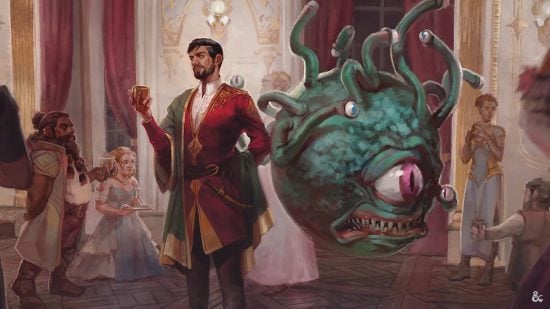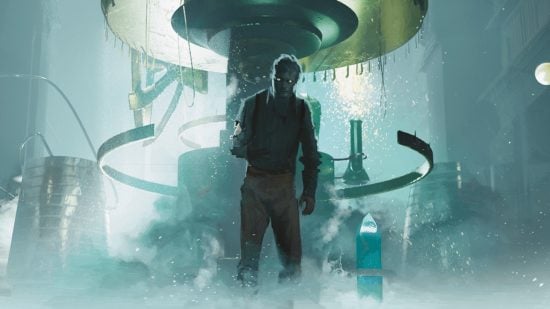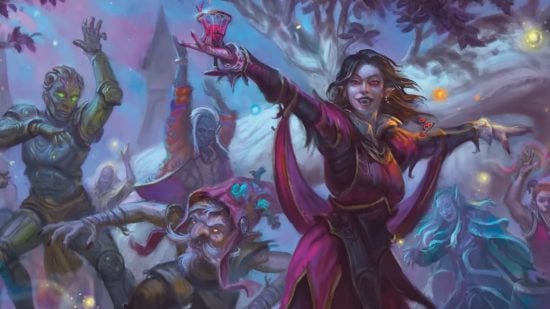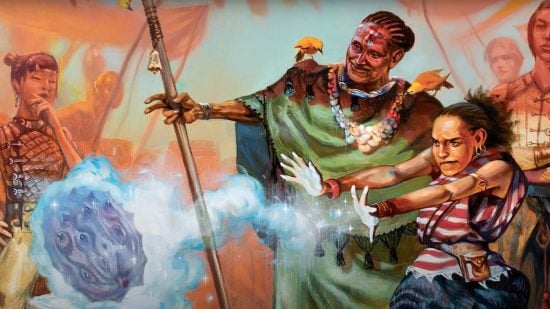The Bard is one of Dungeons and Dragons’ most flexible classes, so the official DnD Bard subclasses are naturally varied. Whether you prefer to be charismatic or combat-ready, supportive or offensive, the Bard subclasses 5e have you covered. Now all you have to do is choose your perfect Bard College – that’s where we come in.
Below you’ll find a complete list of the official DnD Bard subclasses, each reviewed and ranked to help you find the right one for your DnD character build. With your DnD classes choices made, we can also help you find the right DnD races, 5e spells, or DnD feats.
From worst to best, here’s the DnD Bard subclasses 5e, ranked:
- 8. College of Whispers 5e
- 7. College of Spirits 5e
- 6. College of Swords 5e
- 5. College of Valor 5e
- 4. College of Glamour 5e
- 3. College of Creation 5e
- 2. College of Eloquence 5e
- 1. College of Lore 5e
8. College of Whispers 5e
Found in: Xanathar’s Guide to Everything
The College of Whispers 5e takes the espionage and deception you’d expect from a DnD Rogue and gives it a Bard-ish spin. You’ve got the gift of the gab, sure, but you use it to manipulate – or even assassinate – rather than inspire. This is a Bard that charms or frightens its enemies behind closed doors, can disguise itself as the foes it kills, and deals extra psychic damage in battle.
All of this can feel great in a DnD campaign with a big focus on social intrigue. But the College of Whispers offers features that are highly situational, and you’re given very little to play with in a traditional battle, investigation, or dungeon crawl. For these reasons, it ranks bottom – but don’t shy away from playing this subclass if you think it fits your game.
7. College of Spirits 5e
Found in: Van Richten’s Guide to Ravenloft
As spooky as the DnD book it’s found in, the College of Spirits 5e subclass is empowered by spirits from beyond the grave. These supernatural entities grant you all sorts of benefits, from an improved version of the Guidance DnD cantrip to a randomized table of Bardic Inspiration buffs. You can temporarily learn other classes’ spells, and you can use a ghostly spellcasting focus to add 1d6 of extra healing or damage.
All this is very flavorful, but when it comes to power, this College is extremely limited. Having to roll on a randomized table for buffs makes your Tales from Beyond feature unreliable, and the Spiritual Focus fails to account for how few Bard 5e spells actually need a spellcasting focus – meaning that 1d6 scarcely applies in-game.
6. College of Swords 5e
Found in: Xanathar’s Guide to Everything
The College of Swords 5e is one of two Bard Colleges that tries to add martial combat skills to the class. Some bonus proficiencies, a Fighting Style bonus, and an extra attack all aim to boost you in battle. But your main ability is Blade Flourish, which lets you spend Bardic Inspiration dice to deal extra damage in a variety of ways.
Unfortunately, the subclass’ main trick just isn’t that impressive – there are far more useful ways to spend Bardic Inspiration than buffing your own damage, which is usually puny compared to that of the party’s DnD Fighter or Barbarian 5e. If you want a subclass that effectively combines spellcasting and combat, you’re better off with an Eldritch Knight 5e or a DnD Hexblade.
5. College of Valor 5e
Found in: Player’s Handbook
Now onto the other Bard subclass with a big focus on combat – the College of Valor 5e. It’s less focused on your damage output, instead letting you grant allies damage and armor class buffs by spending Bardic Inspiration die. You still get your extra attack and better proficiencies than your battle-happy Bard sibling. Plus, the 14th-level Battle Magic feature lets you make DnD weapon attacks as a bonus action when you spend your action casting a spell.
As far as spellcasting and combat blends go, this one is pretty good – but by no means spectacular. It’s fun to play if you enjoy martial combat and supportive spellcasting, and you can be a real asset to a team that needs help boosting its damage. But there are far shinier, more exciting Bard subclasses out there.
4. College of Glamour 5e
Found in: Xanathar’s Guide to Everything
Speaking of shiny – the College of Glamour 5e subclass adds some twinkling Fey magic to everything your Bard does. Many of your features allow you to give yourself a wondrous, irresistible appearance or manner. Mechanically means charming the pants off everyone around you, buffing friends’ hit points and speed, casting command as a bonus action, and blocking attacks with sheer Charisma.
In terms of theme, this is one of our favorite Bard subclasses. Mechanically, we’re not quite as impressed, though. You’ll find many of these features useful, but the subclass encourages you to build a support-heavy Bard with a mixed bag of abilities in terms of power.
3. College of Creation 5e
Found in: Tasha’s Cauldron of Everything
College of Creation 5e Bards draw their power from the Song of Creation that was sung at the dawn of time. As the name implies, this gives you plenty of creative ways to roleplay as a Bard. You can create floating motes of potential filled with a variety of useful buffs for allies. You can also create non-magical items at will and bring inanimate objects to life to fight alongside you.
All these are pretty unconventional Bard features. They give the College a unique identity, plus each of them is incredibly useful in the hands of a clever player. If you love problem-solving and Sorcerer’s Apprentice style companions, this Bard subclass comes highly recommended.
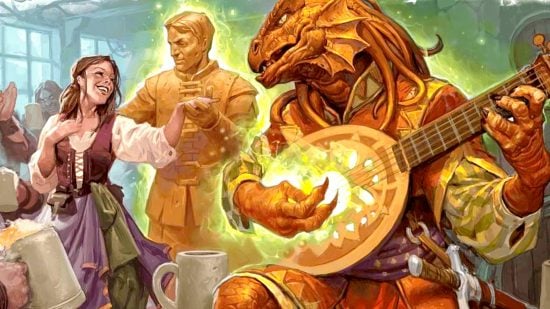
2. College of Eloquence 5e
Found in: Mythic Odysseys of Theros / Tasha’s Cauldron of Everything
If you picked a Bard because you want to be the Face of your party, the College of Eloquence 5e subclass is a must-have choice. Your Charisma transcends even DnD languages, and you’ll rarely fail a Persuasion or Deception roll thanks to your Silver Tongue. The remainder of your features buff your Bardic Inspiration dice – making them easier to replenish and re-use.
The College of Eloquence isn’t flashy or particularly unique, but don’t underestimate a strong core – this is one of the most consistent Bard subclasses there is.
1. College of Lore 5e
Found in: Player’s Handbook
The Bard is one of D&D’s best skill monkeys, and the College of Lore 5e subclass leans into this hard. You’ll start with three extra DnD skill proficiencies, and Additional Magical Secrets grants you two spells from any class. Your Bardic Inspiration can be used to manipulate rolls as a reaction, and later the dice can even buff your own failed ability checks.
Nailing your skills and casting a wide variety of spells makes you useful in any non-combat situation – and even sometimes in fights, too. While the subclass itself is simple, you’ll have plenty to mull over when choosing what skills and spells to pick up. This is a versatile, engaging, and plenty powerful Bard subclass.
Looking for more subclass recommendations? Here are our ranked opinions of DnD Monk subclasses, Wizard subclasses 5e, DnD Druid subclasses, and Paladin 5e subclasses.

